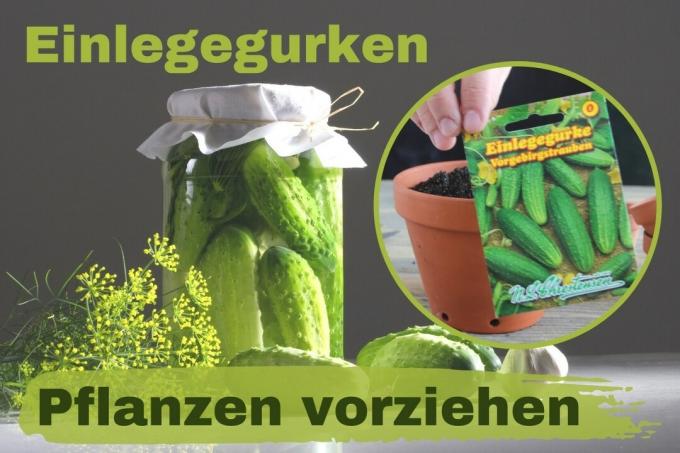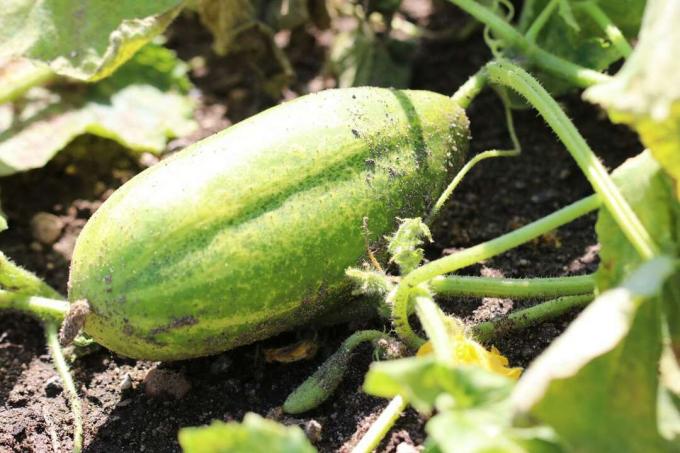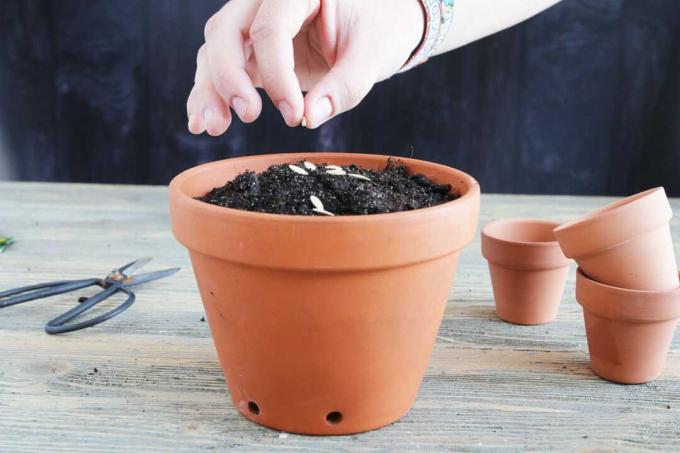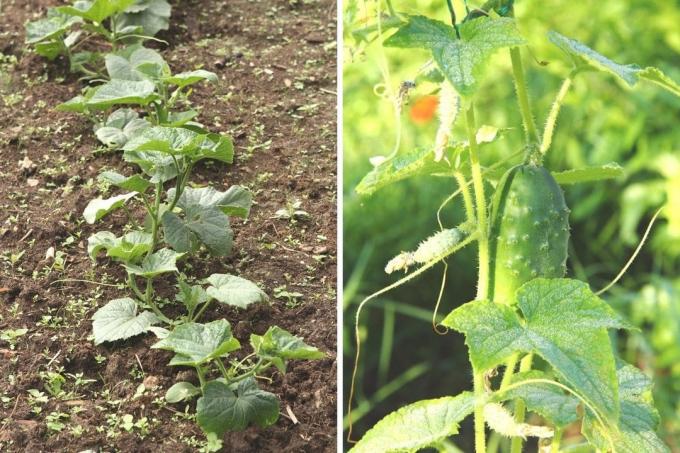
table of contents
- Grow pickling cucumbers
- Procedure: prefer pickling cucumbers
- Planting out
- frequently asked Questions
Cucumbers are relatively easy to care for in cultivation. Many know that cucumbers can be preferred in the greenhouse or at home. But is it also possible to prefer pickling cucumbers?
In a nutshell
- in principle any type of cucumber is suitable as a pickling cucumber
- Can be pulled outdoors about 3 weeks before sowing
- Plant 2 to 3 seeds about 1 to 2 cm deep in a pot of soil
Grow pickling cucumbers
Cucumbers (Cucumis sativus) are among the most popular growing vegetables. Depending on Harvest time and use is called the vegetable as
- Pickling cucumbers (pickles): early harvest, small cucumber
- Salad cucumbers (snake cucumbers): later harvest, large cucumber
Therefore, in principle, any type of cucumber is suitable for growing pickling cucumbers. However, varieties that are specifically named as pickled cucumbers or pickled cucumbers are best suited.

Pickling cucumbers are usually sown directly in the field. However, since cucumbers are sensitive to frost, sowing is only possible at the end of May. In order to be able to harvest earlier and more frequently, it is advisable to bring the pickling cucumbers forward. So you can already put small plants in the bed at the end of May. These are not only ready for harvest faster, they are also more robust. This makes them less prone to eating snails or poor growth.
Procedure: prefer pickling cucumbers
You can start pulling out about three weeks before planting out, i.e. early / mid-April. But how do you prefer the plants? It's actually very easy if you follow these steps:
- Pot or egg carton (min. 8 cm diameter) fill at least halfway with soil
- Place 2 to 3 seeds in a hole
- Cover with 1 to 2 cm of soil
- place on a warm, light-colored window sill or create a greenhouse with a glass that is placed over it
- Always keep the substrate slightly moist
- Germination at at least 20 degrees Celsius after about a week
- after germination leave only the strongest seedling and place the plant in a cooler place

Tip: Put larger seedlings outdoors for several hours a day. Here's how to harden them off and get them used to their future outdoor environment.
After about three weeks you can sort out stunted plants and prick out the cucumbers.
Planting out
When the ice saints are over and frost is no longer to be expected, the seedlings can be sown. Ideally, the plants then have two well-developed leaves. Then you put the young plants about 1 cm deeper in the earth than they were previously in the pot. For successful sowing, make sure that the location meets the following criteria:
- sunny, warm and sheltered from the wind
- Well-ventilated, humus-rich and light soil with a certain proportion of sand
- Plant spacing as with large cucumbers (approx. 60 x 150 cm)
- 4 year break after cucumbers and other cucurbits
After sowing, you should press the plants well and water them regularly with lukewarm water. The pre-grown plants will then be fully grown around mid-July and should be collected as early as possible. Then they can be inserted.

Tipp: Until you have harvested enough cucumbers to pickle, you can store the cucurbits in a cool and dark place.
frequently asked Questions
In theory yes, but it is not effective. If you pre-grow them too early, you run the risk that the plants will grow too big too quickly before they can be sown in the field.
There are a variety of recipes for pickling cucumbers. They are usually put in a mason jar or ceramic pot with vinegar, garlic, onions, dill, bay leaves and mustard seeds. Ultimately, the only decisive factor for the shelf life is that the ingredients have not been heated.
Always keep cucumber plants sufficiently moist. However, it is essential to avoid waterlogging. A good supply of water during growth is the basic requirement for the watery and fresh consistency of the cucumber.
